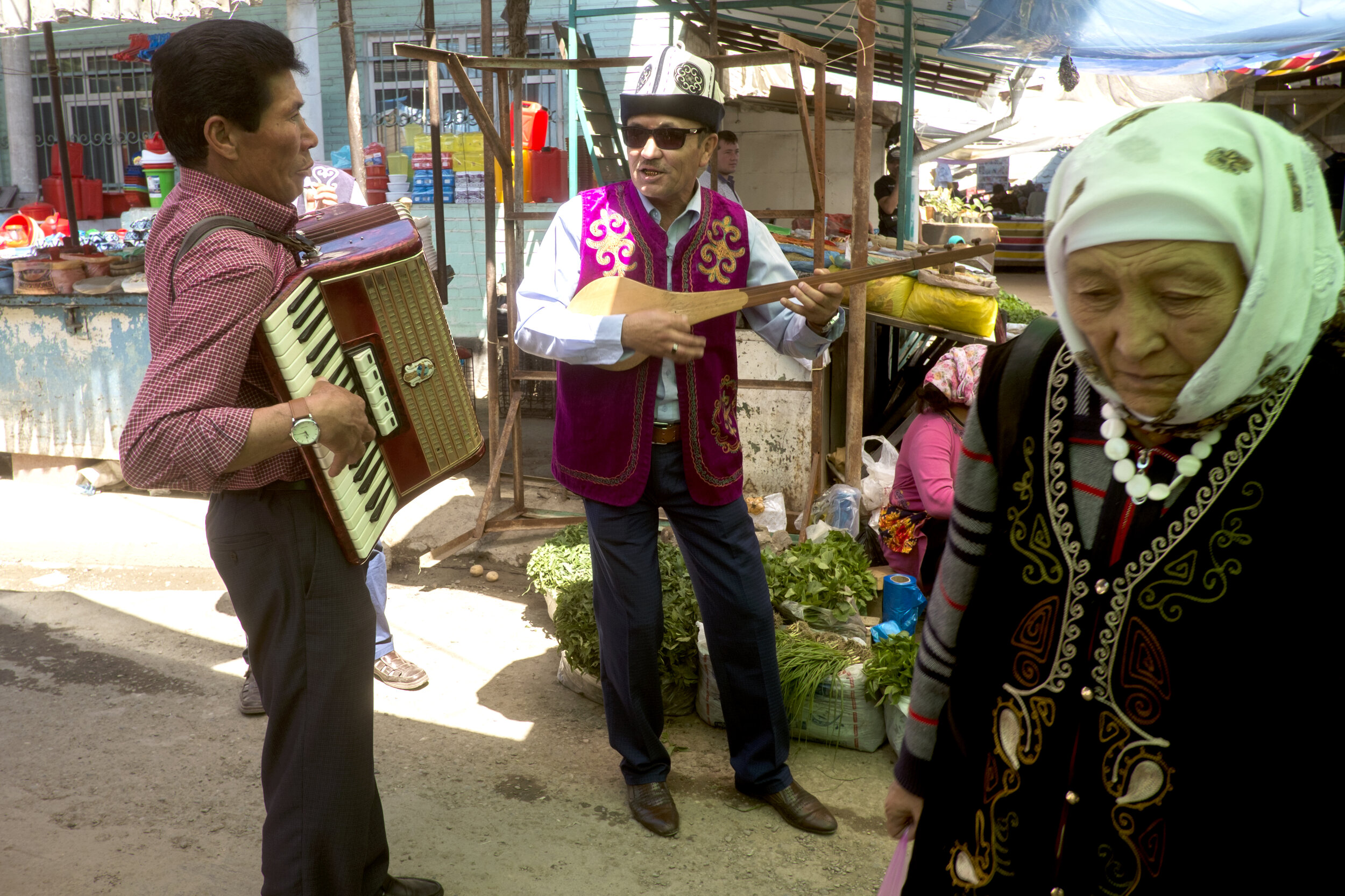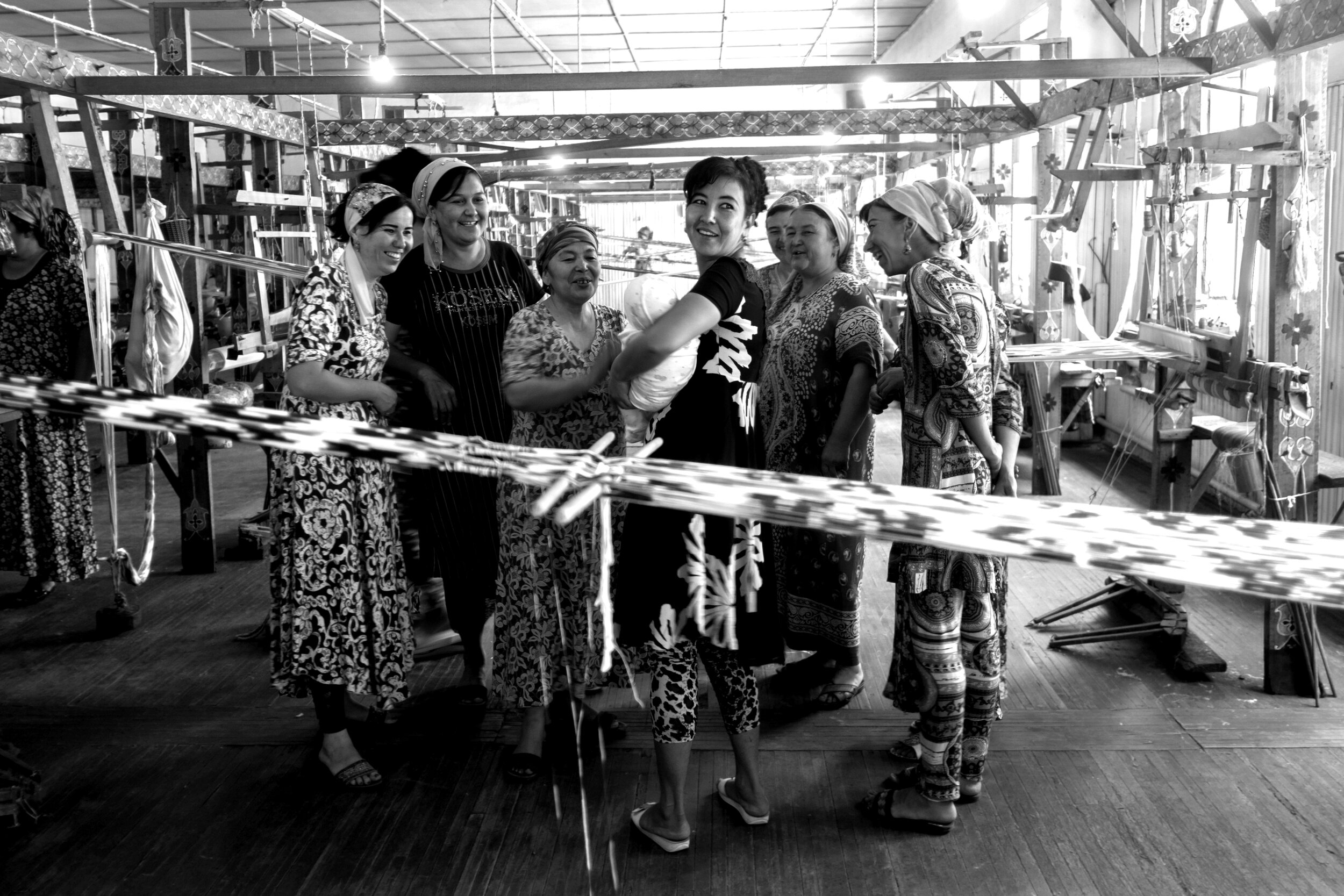Fergana Valley, the most wooed of the Silk Road
… and the most unknown today
I do talk a lot about the Silk Road. What started like a childhood flirt turned into a real infatuation once I actually started to roam around the most popular trade system in history.
There are many reasons why I love all of that ‘in between’ Turkey and China but one of those is the Diversity I encounter along the journey one km after the other. Talking about Diversity and richness there is a tiny little place on that Silk Road map which no many knows about but hides a past so so rich like very few other places on the planet.
Shaded by the famous and stunning blue domes of Samarkand and the mighty mountains of Kyrgyzstan and Tajikistan there is a valley. It is called the Fergana Valley. I will give you few minutes to check it out on the a map cause the political borders drew by Stalin at the beginning of the Soviet Union are something extremely… ‘artistic’. He, clearly did not follow only his artistic feel but also the topographic layout of the valley which is surrounded by mountains and happily washed by rivers which make Fergana valley still today the Garden of Asia. Stalin also had to do something more difficult which, clearly, did not bother him too much: he wanted to divide between three countries this very little piece of land which has been united for something like 2500 years. Today this area is mostly part of Uzbekistan, but also Tajikistan and Kyrgystan and, because of this it has seen some bloody civil uprisings until the start of XXI century.
This tiny area with funny looking borders is what we are talking about
You might think: ‘So, what’s the big deal with Fergana? 2500 years history is ‘normal’ around here’. Yes, you are right, but let me tell you the people who have been living here first….
You might know that this green area between mountains and deserts has been Greek for 200 years (from 256 BC to 10 AC), its people spoke Greek, built Greek looking temples, wore togas and spoke Greek.
The Greeks where only some of the incredible, diverse list of people who conquered and settled in this area right in the middle between the ‘East’ and the ‘West’.
Is the party here?
Around 2300 years ago Alexander (The Great) during his campaign to the conquest of the entire known world, arrived in todays Fergana Valley, had to deal for few years with the Sogdians, Iranian people extremely good in trades, money, languages, businesses, the ‘bosses’ who managed the imports/ exports of the area. Turned out they were not only good with trades but also with weapons and together with other tribes they refused to accept the Macedonian supremacy, revolting against Alexander and his army for years. This after Alexander also founded, another, Alexandria (Eschate, meaning ‘the furthest’), which should have been not far from today Khujand, Tajikistan.
Alexander noticed things were not getting better in those areas and people were not submitting to him so, as usually happened, where weapons failed love will win. The most powerful man of that time married a Sogdian princess, Roxana.
The Greek- Bactrian kingdom of Alexander was the predecessor of the Greek - Indian one, a fusion of culture which could result only in something extremely unique and suddenly an image of a Greek philosopher eating Dahl and Naan comes up in my mind. We ear king with Greek education converted to Buddhism (like Ashoka The Great, who unified almost the entire subcontinent!), artists who created for the first time human looking statues of the Buddha wearing a Toga and common people using coins with Greek writing on.
So far we have got Iranians, Greeks, then the Nomadic people from the steppes of Northern China arrived then the Chinese of the Han dynasty whom felt in love with the horses of Fergana and they did everything to get them, including bloody wars and conquests. Sorry Marco but you were not the first… the Han Chinese who sticked their head out of China for the first time, starting the interactions with central Asia which led ‘easily’ and ‘quickly’ afterwords to the West.
But the tiny Garden of Asia still has more to come: Persians again and then the first Turkic Khaganate (kingdom) and the Chinese again. This time the Tang dynasty, the one which really saw the potential of the commercial routes, 500 years before the Polos (sorry again Marco).
To give some variety to the show someone new also knocked at the door in the VIII century AD: the Arabs and their Islam arrived here, conquering and spreading this new religion and make it lasting until today.
Islam also survived to the most powerful emperor of all the times, Genghis Khan and its Horde did not spare little Fergana in their run to the Atlantic ocean in the XIII century. Yes, that’s also why a huge amount of the population of Central Asia has very asiatic features…
From an aggressive conqueror to the next: Timur (Tamerlane), someone says he was a descendent of Genghis, arrived here trying to englobe Fergana into his Timurid Empire.
While Cristoforo Colombo & Co. were busy finding new ways to reach India and a new trade season started, this time by sea, Fergana was part of many different super powerful Khanates which spent few hundreds years trying to steal, conquer, submit one another. This lasted until Russia and England started their ‘Great Game’ in Central Asia playground.
To end this very long list, here we conclude with the most recent one and the one we can clearly see the influence today: the Russian times, 150 years under the Imperial Russia and then the Soviet Union.
What’s Today’s Fegana Valley
Today while travelling through this tiny section on your Silk Road trip you won’t see Greek temples, Persian looking palaces or the descendent of those ‘heavenly horses’ grazing around anymore.
What is left nowadays come from the last part of this extremely rich and diverse list of civilisation who hanged out here.
The new part of the towns with fountains and boulevards, Soviet looking buildings and pretty perfect gardens stand next to mosques with colourful wooden ceilings labyrinths of elegantly carved wooden columns, which Fergana is famous for. Crowded and spacious bazaars selling the products of the Garden of Asia are located next to quiet and majestic palaces filled with the gold from the West, the silk from the east, the gems and the corals and the sandal wood from India. The luxuries and exotic ‘homes’ of the Khans of the Central Asian medieval ages are what we see today and what is left. Beside being probably the most fascinating place along the Silk road Fergana today it is still the crafty kid of Central Asia, with a multitude of pottery and silk workshops in its villages. Generation by generation the arts have been passed and the result of thousands years of fusions are today still visible in its colourful potteries and its smooths silk.
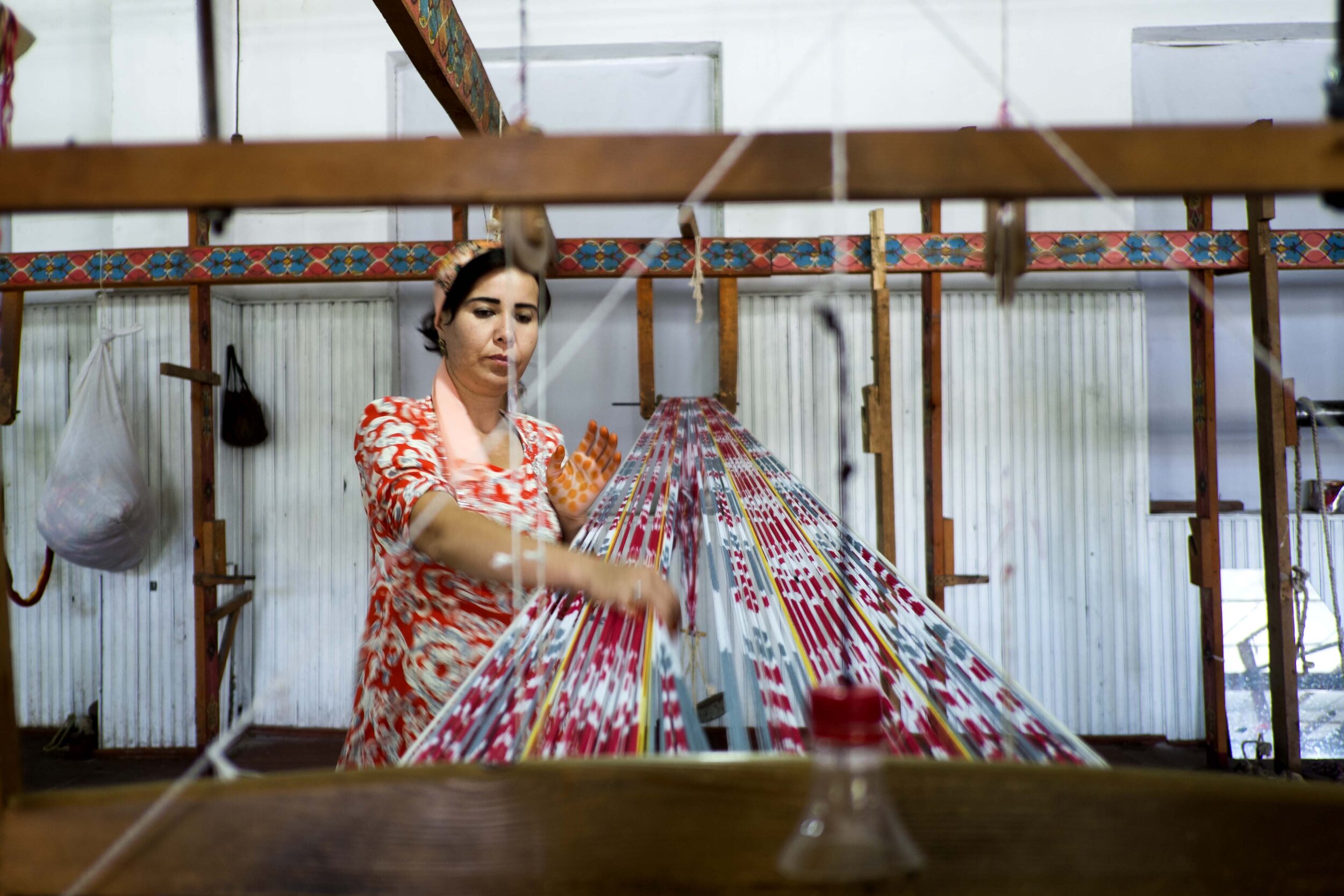
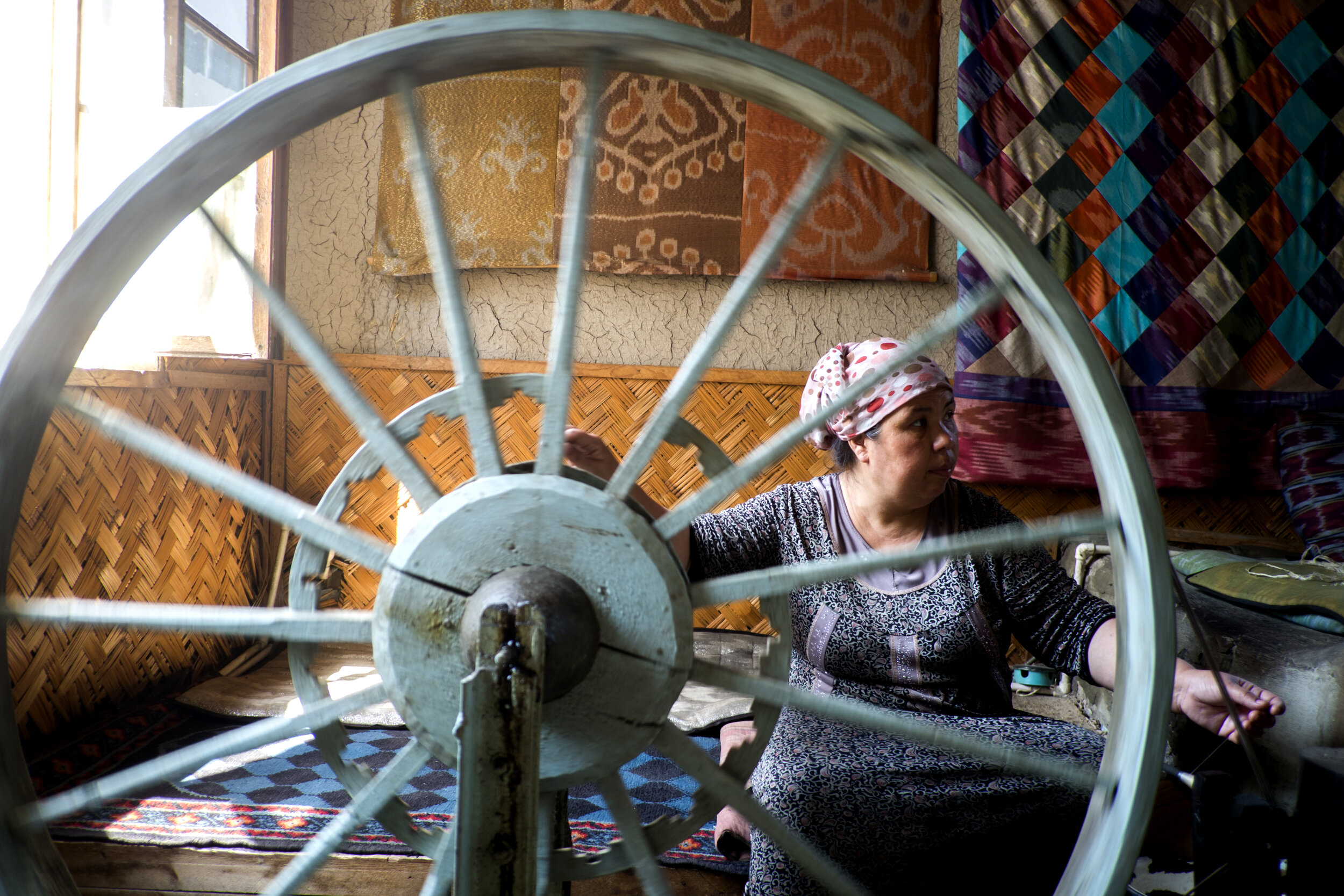
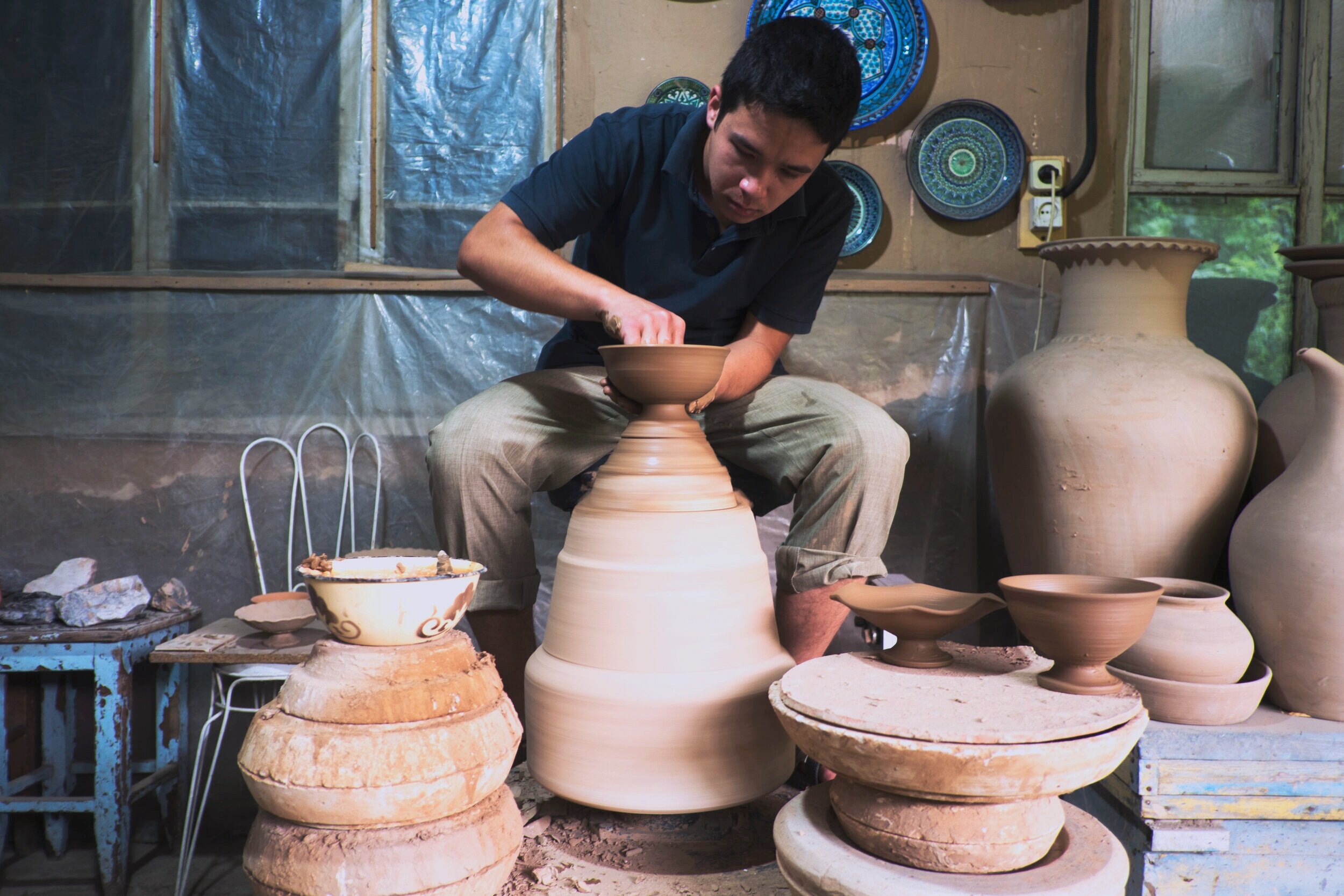

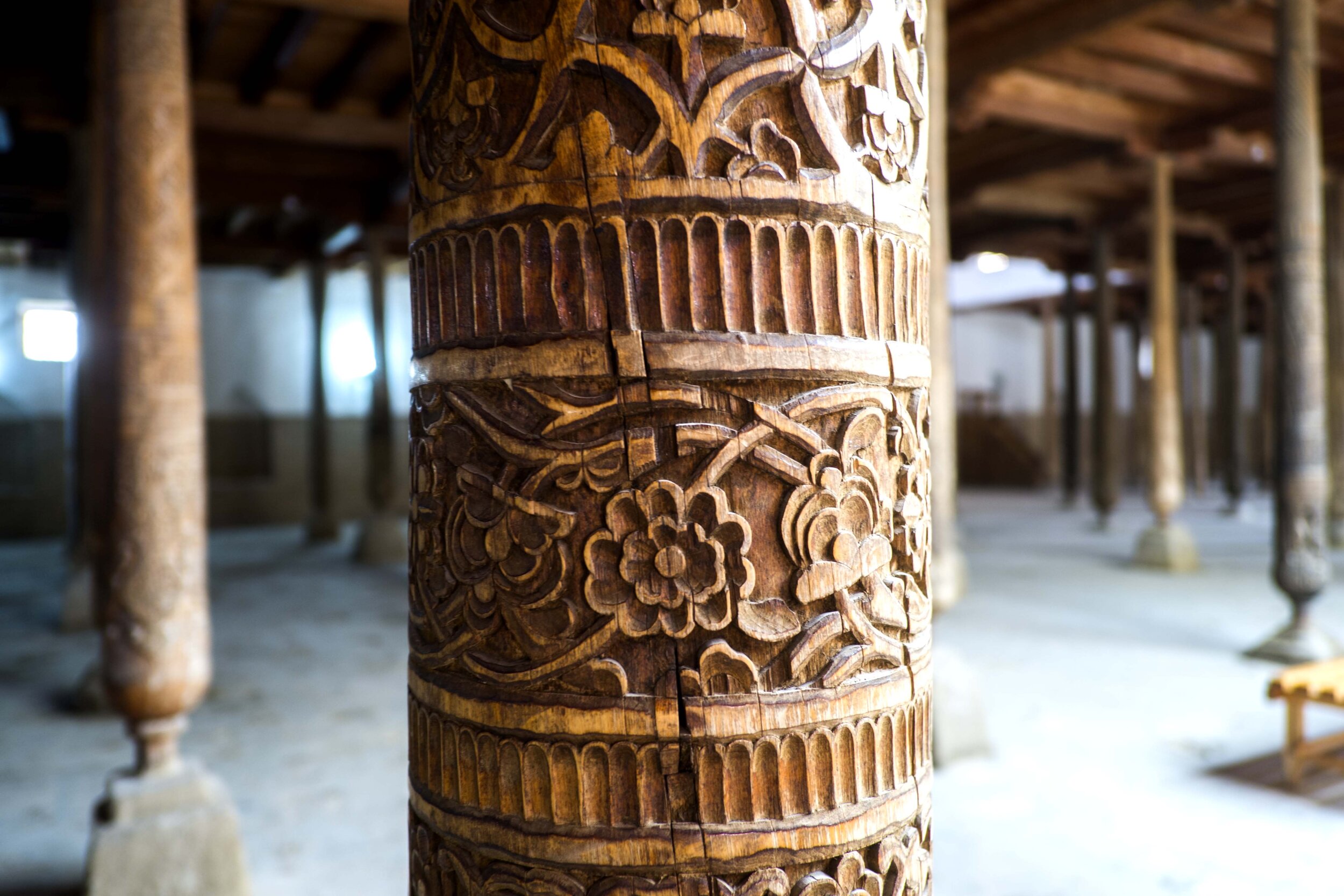

It might not attracts as much as other popular destinations along the Silk Road (for me this is a good point as well) but knowing what has been through this valley I am now crossing on trains, thinking how many different people, faces, traditions, religions, languages, have been living in these villages and army run through this red rocks canyons it absolutely blows my mind. The whole history of my beloved ‘Silk Road’ unfolds all in this little valley from where everything started. Those ancient civilisations were all extremely different from each other by every point of view and if you look carefully you can still find it, like tiny minorities who seem to be direct descendent of those Sogdians for example (the Yaghnobi of Tajikistan), but this is another story like many you can encounter along this incredible road where you can walk through ancient mysterious civilisations and finally link all the dots.
Travelling around Fergana Valley
Today travelling to the Fergana valley is very easy, hassle free and enjoyable. From Tashkent there are a lot of trains, even modern fast one to Kokand or Andijan, from one town to the other there are plenty of Central Asian style minivan. Crossing borders is very fast and easy as well, for mostly of nationalities visa is not required anymore and connections between one country and the other are made easy by many roads. The main and most places to visit in Fergana are on the Uzbek territory such as Kokand, Fergana, Margilan with its silk factories and Rishtan with its pottery workshops. Since you are around I would also ‘jump’ into North Tajikistan to have a look of where Alexander founded its ‘furthest capital’ as well as into Kyrgyzstan.


